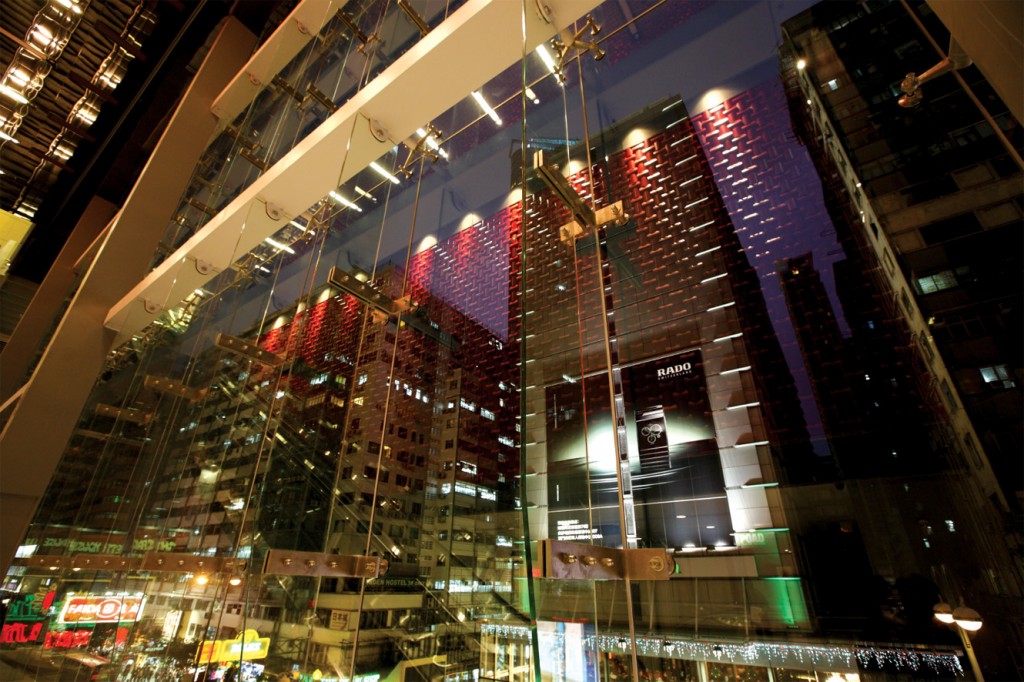Part science, part art form, Benoy’s approach to interior design is turning iSquare’s vertical mall concept into a profit. Hong Kong’s newest shopping mall, entertainment complex and dining venue will be soon be unveiled when iSquare opens its doors in the heart of Tsim Sha Tsui.
Perched over the prestigious location of 63 Nathan Road, this building is the latest development to revolutionise the shopping, dining and entrainment experience by shifting the focus from traditional horizontal mall layout to a vertical one. There are several reasons for this. 
Firstly, iSquare is situated in Tsim Sha Tsui, where there is a significant disconnect between the value of the land and the efficiency of its usage. Rental rates per square foot are some of the highest in the city, and yet much of the retail experience is limited to ground level. The rest of the off street inventory is typically office or residential space, which attracts lower rental rates.
Secondly, iSquare is positioned on a site that was formerly the Hyatt Regency Hotel, and the site’s floor space was too limited for a traditional mall layout. In order for the project’s owner, Associated International Hotels Limited, to get the maximum rental income on their property they would have to go up.
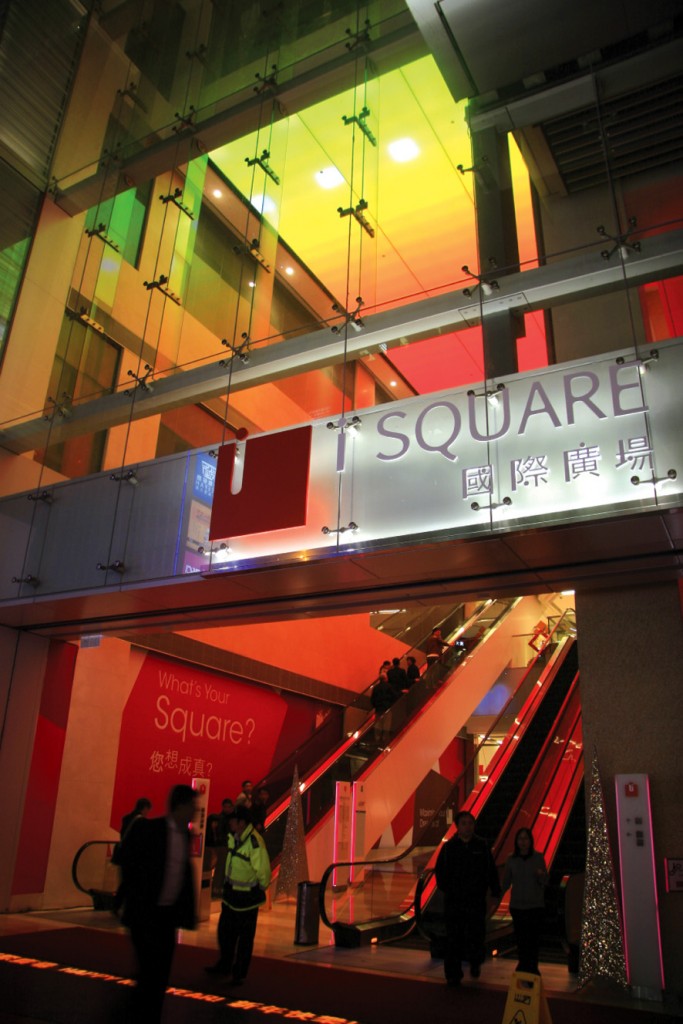 The end result is a building is made up of 31 storeys and has a total of 55,000 square meters of space. The first eight levels of this are retail space, while the remaining floors in the tower have been set aside for other commercial services including F&B.
The end result is a building is made up of 31 storeys and has a total of 55,000 square meters of space. The first eight levels of this are retail space, while the remaining floors in the tower have been set aside for other commercial services including F&B.
However, going vertical is not without its challenges, and chief amongst these is how you get people used to the horizontal mall experience from street level to the shops at the top of your building. To answer this complex problem, Associated International Hotels Limited turned to Benoy for planning and interior design.
“Retail projects live and die by how they guide shoppers through their spaces. Doing the interior design on a project like this is almost a science, and starts with our designers envisaging a journey through the spaces; in the case of iSquare this journey is a series of vertical events and vistas” said Simon Blore, Managing Director of Benoy in Hong Kong, and head of the iSquare design project.
“Configuring pedestrian flows is a challenge in a traditional mall, but it becomes even harder when you go vertical, but one that our experience and expertise allowed us to tackle with confidence.”
Benoy took this challenge on in various ways, namely zoning the levels, reorganising the layout beyond the traditional to compensate for the height and making use of clever design to ensure that traffic flows through the building.
Shifting perspective
Benoy’s unique approach to helping shoppers move up the retail space has been to shift their understanding of where they are in the building. Traditionally the lobby of a mall is situated on its ground or lowest level. iSquare instead has its lobby level on the third level, with express escalators channelling people from the MTR and the street directly here instead of letting them percolate from the ground up. 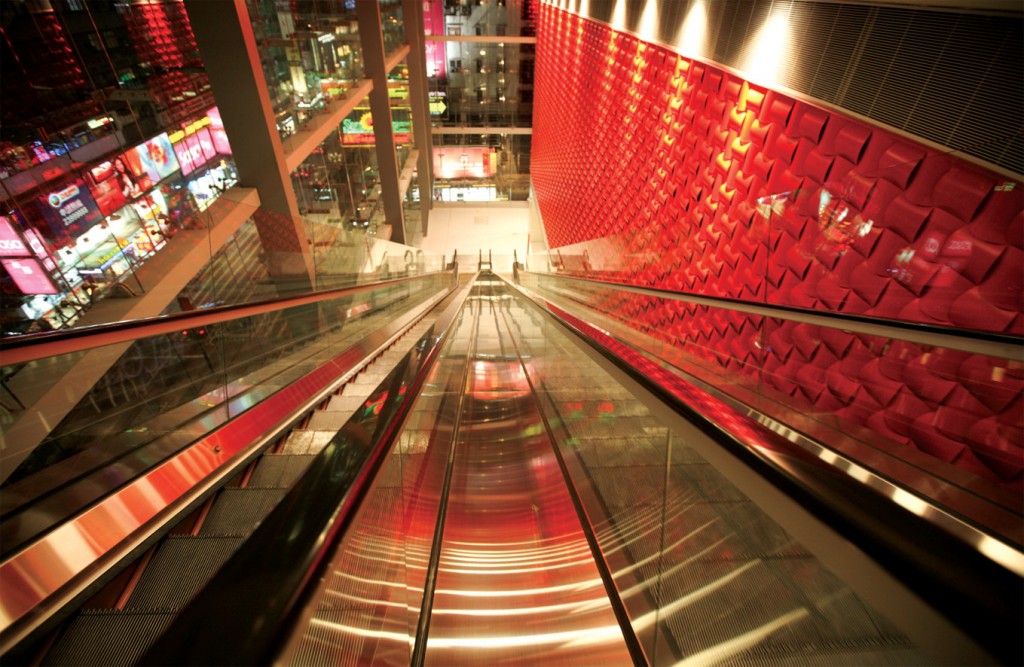
“The critical success factor in the vertical mall concept is getting as many people as possible up into the upper levels as fast as possible. By moving the lobby to the third level we are giving shoppers the impression that there are three levels to the top of the mall, rather than the actual six,” said Simon Blore. “To do this we’ve used 43 escalators to get people around the mall fast, 11 of which are express escalators which get people directly from the street and onto the higher levels in the shortest time possible. Our job is to maximise movement through the malls and achieve a balanced flow for all the tenants and thus yield optimal rental values.”
The advantage of this is that once shoppers have moved up the mall, they can then trickle down slowly, level by level, ensuring that tenants get the maximum amount of foot traffic with no dead spots.
Fashion capital
To further help circulate shoppers through iSquare’s retail levels, Benoy divided the space into zones, and allocated the retail mix accordingly.
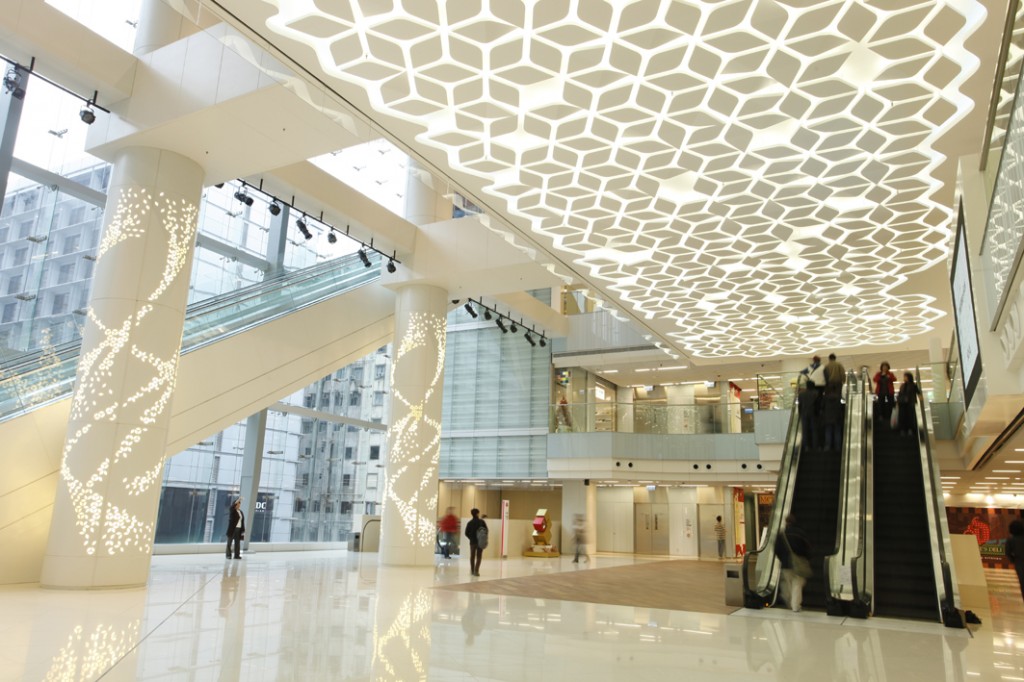 “The zones were each themed to reflect Tsim Sha Tsui’s growing reputation as a fashion mecca, and inspired on some of the world greatest fashion cities, namely Tokyo, London, Paris, New York and Hong Kong,” explained project’s lead Interior Designer Simon Wong. “Each zone has utilised these 5 fashion cities as an inspiration and a point of departure for the design”
“The zones were each themed to reflect Tsim Sha Tsui’s growing reputation as a fashion mecca, and inspired on some of the world greatest fashion cities, namely Tokyo, London, Paris, New York and Hong Kong,” explained project’s lead Interior Designer Simon Wong. “Each zone has utilised these 5 fashion cities as an inspiration and a point of departure for the design”
As examples of this mode of thinking, the underground level, which is connected to the Tsim Sha Tsui MTR, has been titled Hong Kong and features subtle styling to match the almost barcode patterning of Hong Kong’s skyline. On a higher floor is London, where the theme of a green city has been carried through by geometric leaf patterns on the floor finishes and unique ceiling panels which almost seem to undulate in a lifelike manner. 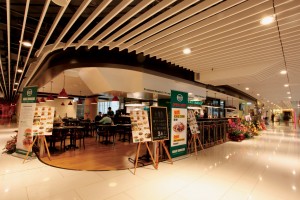
“In the zoning of the iSquare, we have incorporated our understanding of retailing and the desired mix of functions, to develop a scheme that combines leisure, entertainment and retail offers in a rich and multi-dimensional environment” said Simon Blore.
Sense of space
A key goal with the interior design was to break away from the claustrophobic feeling of identical low ceilinged layers stacked one on top of the other. To do this Benoy incorporated asymmetrical shifting voids of space between the levels to give the impression of additional depth to what is in reality a fairly constrained floor space. This is combined with a juxtaposition of curve and sharp angles together.
These voids are strategically placed to let in natural light – which also creates the impression of added space – but are positioned strategically so as not to detract from tenant window displays. This has been augmented by the building’s façade which is made up almost entirely of glass, letting the sun flood the building during the day, and the lights of the city in during the night. Great care has gone into breaking up overly blank features, and as such the ceilings are decorated with alternating use of open slats and panelling making the space feel more active.
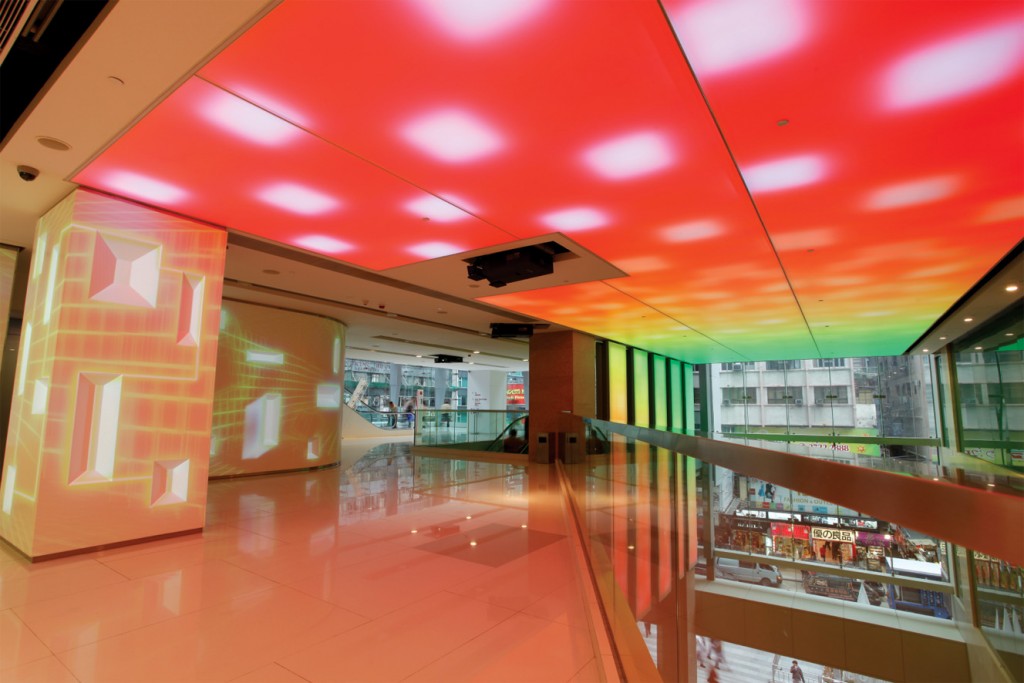 To push this further, iSquare’s escalators are clad in scrolling LCD displays, and the use of electronic art through the building helps shoppers interact with the building, and further encourage flow. The care and detail of the interior design has been extended to every detail, with Benoy’s decades of experience showing in the small touches.
To push this further, iSquare’s escalators are clad in scrolling LCD displays, and the use of electronic art through the building helps shoppers interact with the building, and further encourage flow. The care and detail of the interior design has been extended to every detail, with Benoy’s decades of experience showing in the small touches.
For example, a distinctly warm and metallic colour palette is used strategically throughout the building helping to guide shoppers to lifts, escalators and other facilities. Public seating is available throughout, encouraging the public to spend more time in iSquare. Another example is the bathrooms, which are not only colour coded (blue for men, pink for women), but the ladies have more than double the space of the mens, thereby avoiding long lines of people milling in the passageways on busy days.
“The concept is organic, very efficient and linear. The aesthetics are hard edged, modern, contemporary, clean lines, representing how dynamic Hong Kong is in an organic way,” said Simon Wong. “There are largely softer issues, and historically they are elements have not been seen as important in Hong Kong, but give an idea of attention to detail and style.”
Ultimately, the aim of great planning and interior design is to strike that perfect balance between form and function, harnessing aesthetics to maximise the profitability of a project, and this is exactly what Benoy has achieved with iSquare.
Already the project has achieved a site usage ratio of 60 percent, which compares very favourably with the industry standard of 50 percent. This is commendable for a traditional horizontal layout, and even more so for a vertical design. In addition the mall looks set to benefit from the proposed pedestrianisation of the lower end of Nathan Road.
“The integrated location fusing seamlessly with TST MTR Station and Peking Road makes iSquare a true gateway to Nathan Road as a shopping location, reinforcing the character and spirit of the neighbourhood. iSquare will become an ‘arrival icon’ within this neighbourhood,” said Simon Blore.
Benoy takes pride in achieving the best balance between creativity, expenditure and revenue; while designing projects to be innovative and ground-breaking, the firm aims to ensure that the commercial underpinnings are sound. “We are designers of commercial buildings, and the currency of our creativity is to create value in everything we do”.












